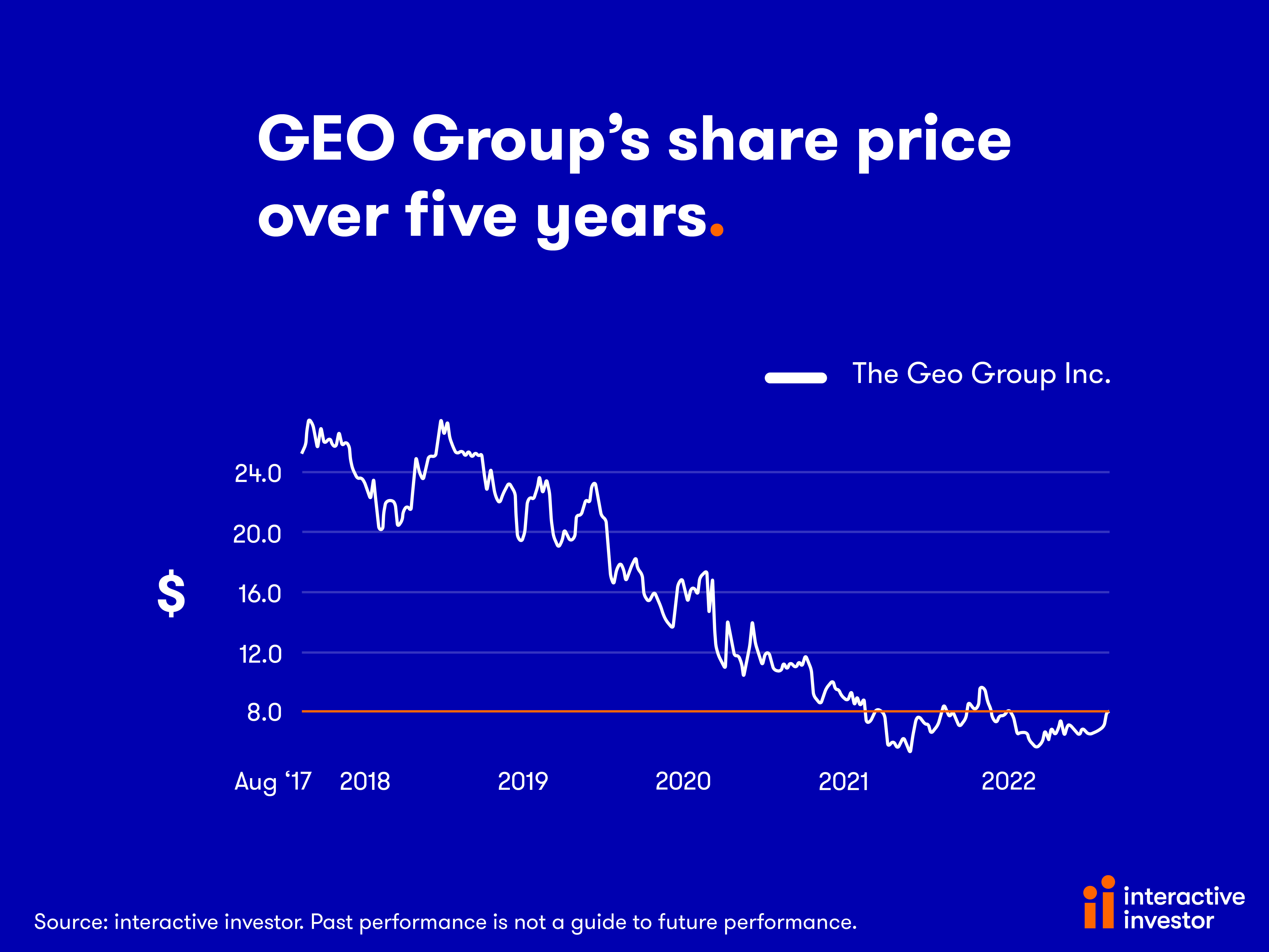Stockwatch: Michael Burry has sold all but one stock - should you own it too?
19th August 2022 11:16
by Edmond Jackson from interactive investor
The hedge fund investor, of ‘The Big Short’ fame, has been selling down all its equity holdings – except one. Companies analyst Edmond Jackson runs the rule over the stock.

For anyone unaware, Michael Burry, pictured above, shot to fame as a result of taking a huge short position from 2005 against sub-prime credit that propped the US housing market. When it collapsed in 2007, his credit default swaps netted his hedge fund a $2.7 billion profit or near 500% gain – ensuring his status in US investment folklore.
Scroll forward to 2019 and on the long side, Burry took a 5% stake in video game retailer GameStop (NYSE:GME). Adopting a high-profile stance towards its board as an activist investor, this attracted the following of retail investors – such that a squeeze on short positions led to a 2,500% rise within weeks.
Unsurprisingly then, a regulatory filing last Monday caught my attention: how Burry’s hedge fund, Scion Asset Management, has continued to sell down its equity holdings (anticipating a debt-driven financial crisis, Burry has tweeted). It is left with 501,360 shares in The GEO Group (NYSE:GEO), a real estate investment trust that specialises in leasing and operating prisons.
It could be described as the ultimate conservative stance: human nature i.e. the extent of felony does not change, relative to other industries over the economic cycle. Indeed, prisons might even benefit this time around given a catch-up in courts and sentencing under way in the aftermath of delays from Covid lockdowns.
The latest earnings call (on the second-quarter results) elicited management’s claim, GEO has fared “fairly well” in part recessions because 60% or more of its costs constitute labour, hence a rise in unemployment would provide more job applicants “and possibly improve our financial position”.
Stock has fallen more than 70% in four years
While the revelation pushed its price up 23%, a rise from $6.75 to $8.33 over Monday to Wednesday, the stock’s low was $5.25 last March after a long slide from $28 in mid-2018.

The stock was also helped by Wednesday’s news of extending circa $2 billion debt maturities. For although this will incur a higher interest rate, it makes the liabilities more manageable, hence, reduces risk overall.
Profit-takers clipped the price to $8.00 yesterday.
$2 billion net debt has been a substantial overhang
The de-rating over the past couple of years has appeared to be driven primarily from GEO’s extent of debt, when ultra-low interest rates prevailing since the 2008 crisis encouraged some companies to gear up.
The end-June balance sheet showed only a marginal reduction from $2,626 million to $2,574 million, versus $588 million cash. There is no short-term debt, however, and the ratio of current assets to current liabilities is 2.6x.
At the 2 August second-quarter and interim results, net debt was targeted to reduce by at least $200 million a year, hence reducing net debt below 3.5x EBITDA (earnings before interest, tax, depreciation and amortisation) by end-2023 and sub-3x by end-2024.
It is on the right trend, albeit modestly and with a debt repayment rescheduling raising the interest expense by $27-$30 million this year and by $37-$41 million in 2023.
- Four investment trust turnaround stories the pros are backing
- Top investors tap ‘very rare’ opportunity to buy cheap small stocks
Negotiations have now concluded for $125 million to be repaid in 2023, $165 million in 2024, $341 million in 2026, $1.1 billion in 2027 and $526 million in 2028.
That would significantly reduce GEO’s financial risk, where the stock currently trades modestly against classic investment ratios.
First-half-2022 operating profit did rise 28% to $177 million, although higher taxation meant net profit eased slightly to $92 million. Yet full-year net income guidance was raised into a $158-$166 million range (from $145-157 million at the first-quarter results last May), which could mean annual earnings per share (EPS) around $1.3 –hence a forward price-to-earnings ratio (P/E) as low as 6x.
If realistic, despite higher interest costs and ongoing uncertainties of Covid, it would bolster confidence in GEO as a debt reduction play.
Financial ratios may largely discount the debt risk
GEO is a rare example in the US market where stocks are typically still at big premiums to classic “Graham and Dodd” criteria that averages earnings over 10 years.
Price-to-book (or net asset value) is 0.9x, hence a modest discount. Although I note from the end-June balance sheet that 85% of net asset value constitutes intangibles/goodwill – most likely historic premiums to book value, paid when making acquisitions.
The trailing price/sales ratio is around 0.4x, yet the operating margin nowadays is respectably near 15% - aiding an historic return on equity around 8%.
Such measures are broadly attractive although hardly constitute a “margin of safety”, as Graham and Dodd used to insist.
There is also no dividend after payouts were suspended in April 2021 to focus cash flow on debt management/reduction; on which news the stock dropped 35% to $8.
The last four financial years’ income statements look uninspiring for growth, although GEO has faced disruptive effects of Covid and management has cited second-quarter 2022 revenue up 4% like-for-like to $588 million, after declines for the last two years.
However, modest financial progress has also resulted from “policy changes affecting several federal contracts”, which is an inherent risk when tied into government.
Also, while occupancy levels rose, detainees remain below historic levels as a result of outstanding federal court orders related to the Covid pandemic.
More positively, this should re-balance over time unless a new variant disrupts. The ability to manage Covid transmission at the facilities remains a key ongoing risk.
The GEO Group, Inc - summary income statements
$ million
| 31/12/2018 | 31/12/2019 | 31/12/2020 | 31/12/2021 | |
| Total revenue | 2,331 | 2,478 | 2,350 | 2,257 |
| Cost of revenue | -1,756 | -1,861 | -1,778 | -1,629 |
| Gross profit | 576 | 617 | 572 | 628 |
| Total operating expenses | -311 | -317 | -328 | -339 |
| Operating profit | 265 | 300 | 244 | 288 |
| Interest cost | -150 | -151 | -127 | -129 |
| Other income/expenses | 0 | -5 | -16 | 10 |
| Pre-tax profit | 149 | 174 | 124 | 193 |
| Taxation | -14 | -17 | -21 | 123 |
| Net income | 145 | 167 | 113 | 77 |
| Basic EPS | 1.2 | 1.4 | 0.9 | 0.6 |
| Diluted | 1.2 | 1.4 | 0.9 | 0.6 |
A clearly defined, long-term development plan is required
A long-term development plan may exist but is not communicated in GEO’s published information that I have seen. Otherwise, it is quite hard to get a grasp on this stock beyond the sense of a play on debt reduction.
Historic development has been steady. GEO was founded in 1984 as Wakenhut Corrections Corp, which floated on Nasdaq in 1994; then diversified into psychiatric hospitals in 1998 by acquiring South Florida State Hospital. A 2002 merger led to a re-naming as GEO Group.
- Can two lockdown success stocks keep winning?
- Stock market rally doesn’t convince professional investors
Operations are predominantly US-based with more than 65,000 beds in 51 facilities versus around 6,500 abroad. Expansion into Australia began in 1992 and in 1999 a joint venture was established in South Africa. The UK was also engaged by way of a joint venture albeit discontinued in 2003.
For conviction as to long-term capital growth prospects, also restoration of dividends, this near 40-year-old company needs to clearly target how it intends to re-rate revenue over $2.5 billion and benchmark its progress when reporting.
Over 15% of GEO’s issued share capital is sold short
Burry probably senses the chance for a squeeze to help a re-rating.
Shorting interest has been on a steadily declining trend since March 2021. I would be more concerned if shorts were rising.
GEO could potentially be challenged by a new Covid variant conflating with the higher interest payment demands; if probably a worst-case scenario.
I believe medium-term prospects look net-attractive and a position is justified; also, for UK investors to get US dollar exposure. Buy.
Edmond Jackson is a freelance contributor and not a direct employee of interactive investor.
These articles are provided for information purposes only. Occasionally, an opinion about whether to buy or sell a specific investment may be provided by third parties. The content is not intended to be a personal recommendation to buy or sell any financial instrument or product, or to adopt any investment strategy as it is not provided based on an assessment of your investing knowledge and experience, your financial situation or your investment objectives. The value of your investments, and the income derived from them, may go down as well as up. You may not get back all the money that you invest. The investments referred to in this article may not be suitable for all investors, and if in doubt, an investor should seek advice from a qualified investment adviser.
Full performance can be found on the company or index summary page on the interactive investor website. Simply click on the company's or index name highlighted in the article.
Disclosure
We use a combination of fundamental and technical analysis in forming our view as to the valuation and prospects of an investment. Where relevant we have set out those particular matters we think are important in the above article, but further detail can be found here.
Please note that our article on this investment should not be considered to be a regular publication.
Details of all recommendations issued by ii during the previous 12-month period can be found here.
ii adheres to a strict code of conduct. Contributors may hold shares or have other interests in companies included in these portfolios, which could create a conflict of interests. Contributors intending to write about any financial instruments in which they have an interest are required to disclose such interest to ii and in the article itself. ii will at all times consider whether such interest impairs the objectivity of the recommendation.
In addition, individuals involved in the production of investment articles are subject to a personal account dealing restriction, which prevents them from placing a transaction in the specified instrument(s) for a period before and for five working days after such publication. This is to avoid personal interests conflicting with the interests of the recipients of those investment articles.